Popular games for platform Odyssey 2 / Videopac G7000
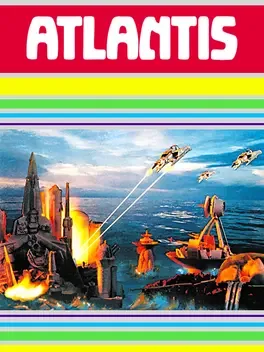
The lost city of Atlantis is under attack! Wave after wave of Gorgon vessels are approaching, each armed with weapons capable of destroying a part of the city. You are in charge of the command posts at the edges of the city and need to defend it from the invaders. The various gorgon craft will keep flying by on the screen in varying numbers and in different flight patterns. At first they fly high in the sky but then progressively lower. If an enemy makes it low enough before you destroy it, it will use it's weapons and destroy one of the buildings in Atlantis. As you progress in the game, the enemy craft will keep increasing in speed. The game ends when all remaining buildings in the city have been destroyed.
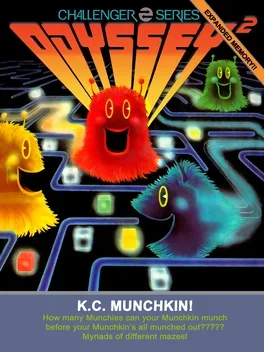
A copy of Pac-Man, but with various improvements. This game is primarily known for the Atari lawsuit against it which set an important precedent for copyright and lawsuits in videogames.
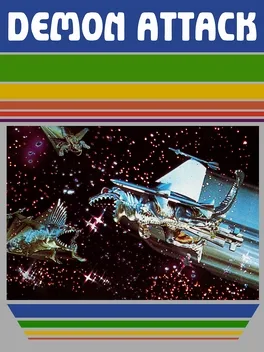
Demon Attack is an arcade action game with gameplay similar to Space Invaders. You control a laser canon at the bottom of the screen, and need to destroy wave after wave of brightly colored demons. The demons bounce around the screen in bizarre patterns, and try to destroy your canon with bombs or lasers. When you shoot a demon, it will be replaced with another or will split into two smaller demons depending on which wave you are playing. When the required number of demons for the current round is finally destroyed, you can move on to the next, more difficult round.
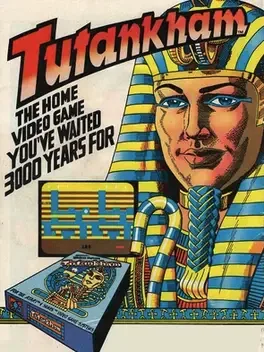
Tutankham is a combination of the maze, action and shoot 'em up genres. Taking on the role of an explorer grave robbing Tutankhamun's tomb, the player is chased by creatures such as asps, vultures, parrots, bats, dragons, and even curses, all that kill the player on contact. The explorer can fight back by firing lasers at the creatures, but he can only cover the left and right directions. The player is also endowed with a single screen-clearing "flash bomb" per level or life. Finally, each level has warp zones that teleport the player around the level, which enemies cannot use. To progress, the player collects keys open locked doors throughout the levels, searching for the large exit door. Optional treasures can be picked-up for bonus points. Each level has a timer; when it reaches zero the explorer can no longer fire lasers, and once a level is cleared the remaining time is converted to bonus points.
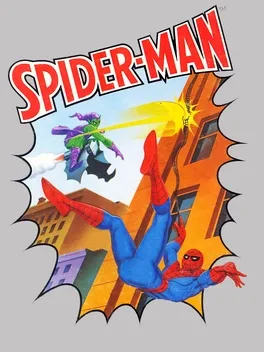
Spider-Man released in 1982 by Parker Brothers was the first video game to feature SpiderMan and also the first video game based on a Marvel Comics character.
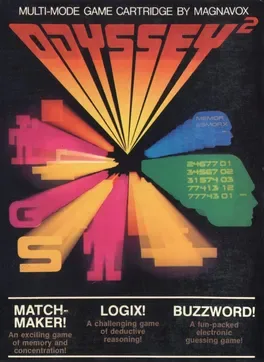
Three games are available in this compilation: Matchmaker! (selected by pressing "1") is a regular Memory game. A matrix with 20 letters appears on the screen and the player has to find pairs of symbols hidden by the letters. Two counters will be displayed: time and number of matches. In two players mode (selected by pressing "2"), the players share the matrix and the one who makes more matches win. Logix! (selected by pressing "4") lets the player guess a sequence of five different digits. The player types in the first try and the computer will display a two digit number with the number of correct digits to the right and the number of correctly placed digits on the left. The player has then to continue guessing the sequence based on the clues given. The object is to solve the problem in the least number of tries, counted on the left ot the screen. Buzzword! (selected by pressing "3") is similar to the Hangman game. A row of dashes will appear in the screen, representing a word. Also, eight X's will appear at the bottom of the screen. The player tries to guess the word at the screen by typing letters on the keyboard. If a letter is right, it is replaced in the word. If it is wrong, it replaces one X on the screen. The game ends when the player has discovered the word or when he has made eight mistakes.
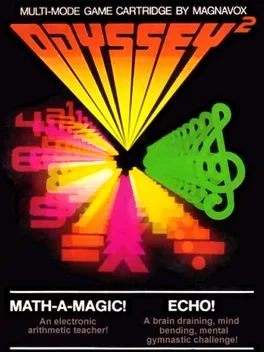
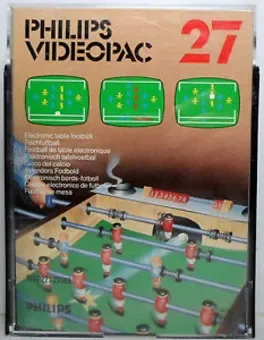
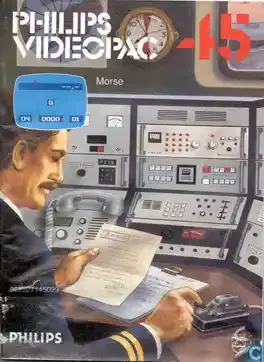
Morse teaches the code to players. There are 4 types of games which can be selected in a menu screen: - The first type is a Morse code learning game. The player selects the game speed (4 to 30 words per minute) and level (1 to all 36 characters available). The computer will play the Morse signal for the first symbol (Q) and the player has to type in the symbol. After learning two signals, the game starts properly by introducing a row of trees in the top of the screen. An arrow is also displayed near the 4th tree from the left and a man on the right side. For each 10 correctly responded symbols the man takes down one tree. When he reaches the arrow, a new symbol is introduced and the process starts over again. - The second type lets the player type individual symbols and listen to their respective codes. -The third type is similar to the second one, but in this one the player types a sequence of symbols and then press "enter" to ask the computer to play the respective code. - In the fourth type the player uses the "action" button of the joystick to enter codes into and the computer plays them and shows the respective symbol entered.
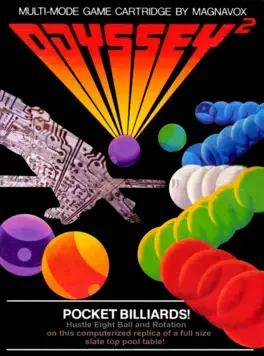
In this pool title, two players can choose either one of the two games available: 8-ball or Rotation. The games are selected by pressing any direction of the joystick while their names are displayed on screen. In the 8-ball game, the winner is the first player to sink either one of the two black balls in game. In Rotation, the black balls are replaced by colored ones, and the winner is the player to sink the most balls. By sinking one ball, the player gets the chance to try another shot. There are no penalties for missing the balls or sinking the white one. Players can choose the direction of the shot (by rotating the cue around the white ball) and the strength of the shot (the longer the action button is pressed, the harder the shot is).
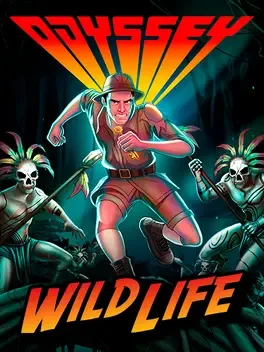
You are Josué Jorge and about to embark on an amazing Odyssey in search of the Chalice of Immortality. The place is the legendary island of Ginnugahar, which is a living territory, hungry for the life energy of anyone who dares set foot there and search for the relic. Watch your time over there, because the minute you enter the forest, its chronometer will start and until it stops, your life force will be sucked as it counts down. Finish the quest before time runs out or forever be part of that dreaded piece of land!
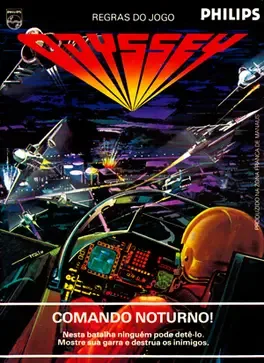
Comando Noturno! (Night Commando!) is a combat flight simulator. The player controls a fighter plane on a night mission, and his task is to take off, destroy the target, avoid enemy attack and return to base.
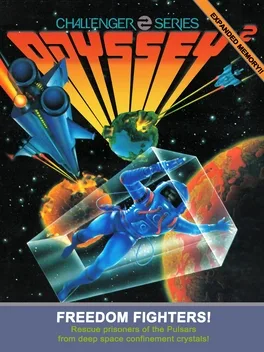
A shooting game featuring a Defender style left/right shooting ship. Enemies drift onto the screen with increasing speed, somewhat reminiscent of Geometry Wars.
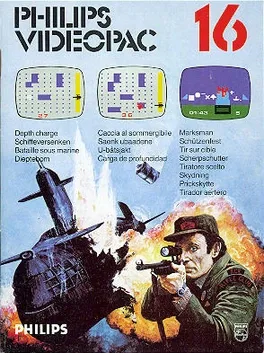
Two titles are available in this cart: Depth Charge is a single-player BattleShip variant. The player controls a cannon in a top-down view trying to destroy 7 submarines hidden in the area of water shown on screen. The area is a 8x8 grid, and the player controls a white cross-hair over it with the joystick. Pressing the action button will shoot the cannon. If a submarine is hidden in that particular area, a blue square will appear, marking it. If there are no submarines, the game will warn the player with a sound and that area will continue unmarked. There are submarines of 4 different sizes, with there being 3 with one section each, 2 with 2 sections each, 1 with 3 sections and 1 with 4 sections. The game keeps track of the number of shots tried by the player, and the total is shown at the end of the game, when all submarines are destroyed. Marksman is a shooting gallery game. The player can choose between 2 game durations: 1 minute or 3 minutes. The game is played in a first person perspective, with the player seeing the rifle and the targets in front of it. A line of targets will scroll from right to left, bouncing up and down in front of the rifle and the player has to aim at them and shoot. There are 9 different targets which grant the player scores from 1 to 9 points each. When the player reaches 100 points, the targets start to move faster. The game ends when the time reaches 0:00 or when the player runs out of shots (starting with 24).
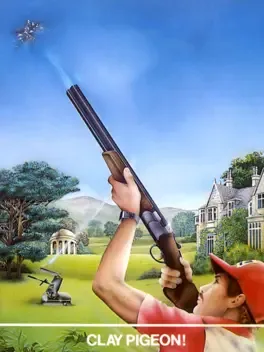
Join this true olympic skeet competition, testing your skill! As the name implies, Clay Pigeon! is a clay pigeon shooting game. At the left corner, a trap launches targets toward the shooter. The player controls the shooter which stands in the right corner of the screen.
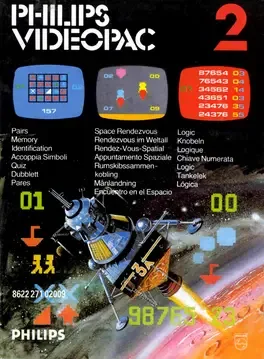
Three games are available in this compilation: Pairs (selected by pressing "1") is the same game as Matchmaker!, a regular Memory game. A matrix with 20 letters appears on the screen and the player has to find pairs of symbols hidden by the letters. Two counters will be displayed: time and number of matches. In two players mode (selected by pressing "2"), the players share the matrix and the one who makes more matches win. Space Rendezvous (selected by pressing "3") is somewhat similar to Lunar Lander. Two players have to try to link up their spaceships to the orbiting mother ship, while avoiding hitting the ground. Each ship has 50 megajoules of power and will be refueled when a perfect link-up is performed. A counter will be displayed for each player, and wins the player who first performs 10 perfect link-ups. If one player goes out of fuel, he's out of game. Logic (selected by pressing "4") is the same game as Logix!. The player has to guess a sequence of five different digits. The player types in the first try and the computer will display a two digit number with the number of correct digits to the right and the number of correctly placed digits on the left. The player has then to continue guessing the sequence based on the clues given. The object is to solve the problem in the least number of tries, counted on the left on the screen.
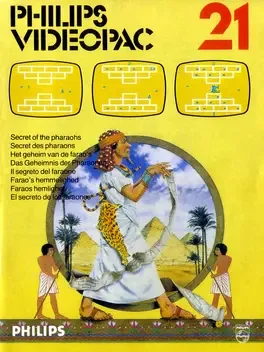
Secret of the Pharaohs is a puzzle game for two players. Each player has to find the correct position of stones in the Pharaoh's pyramids. The screen is horizontally divided in the half, and the pyramids have four blocks in the lower layer (or higher for the top player), three in the middle and one at the top (or bottom for the top player). Each block has two possible positions for placing the stones, and after the players place them, a number will appear above (for the up player) or below (for the down player), showing how many of them are correctly placed. Players must then relocate the stones until all of them are placed correctly. When it is done, the higher (or lower) layer of blocks will be liberated. The player who first places all the stones correctly in all the layers wins.
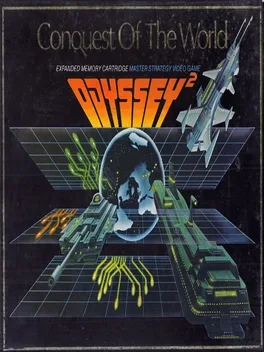
CONQUEST OF THE WORLD represents a significant departure from traditional game design. The components have been designed to provide you with a very realistic model of the real world to both electronically and graphically simulate strategic and tactical confrontation between world powers. Electronic land, sea and air forces can be deployed against each other in any combination and are totally dependent on supplies which are represented by energy units. The game board is a true-to-life model of the relationships between countries of the real world in the early 1980's. Forty-three countries have been divided into eleven "politectonic" or geo-political zones. Each country has been weighted with a power base figure that reflects its capability to persuade other nations to conform to its wishes - by diplomatic coercion or by direct military force. These figures are based on the formula created by Ray S. Cline, formerly Deputy Director of Intelligence for the C.I.A. Pp = (C+E+M)x(S+W) PERCEIVED POWER = (Critical Mass (Population + Territory) + Economic Capability + Military Capability) x (Strategic Purpose + National Will). Future shifts in world power and change in governments will - of course - make changes in these numeric weightings appropriate. Players can feel free to sustain realism by changing the numbers assigned to each country as life goes on. If you play other war games such as those published by Avalon Hill and SPI, you will find that the computer cartridge interfaces very effectively with them. The onscreen combats will generate much more excitement and realism than the usual dice provided to resolve conflicts. Onscreen energy units can be programmed into the computer to reflect the relative strength between different forces. The differential between the onscreen energy units at the end of each battle can also be applied to the combat results tables that come with these games. Conquest of the World is the first game of its kind, so be ready for many unusual features. Take the rules one step at a time and you will find it to be a fascinating game of endless challenge - which, once learned, is not at all difficult to explain to others. THE OBJECTIVE OF THE GAME is to lead your Homeland to world domination through negotiations, conquests and alliances. Each successful conquest and alliance you make will strengthen your country's power base. The country with the strongest power base at the end of the game is the winner.

Pachinko! is based on the Japanese gaming device of the same name. The players are shown right below a giant Pachinko game. Five cups are placed across the screen, with two rotors, one at each side, and the Magic Mountain in the middle. The object of the game is to bounce the balls inside the cups to earn points. Each player has an energizer, used to beat the ball. If the action button is pressed, the energizer will be risen and if the ball touches it, it will continue its horizontal direction. If the ball touches an energizer not completely raised, the ball direction will be reversed. If the ball hits a player, it will loose energy.

The players are in the Battle Control Central at the heart of the United Planets Interstellar Galactic Empire. From there, they monitor the activity of the twin solar systems of Terien and Lorien, forty-three billion light years away. Their mission is to control to protect the planets of those solar systems from the invasion fleet with the remote controlled battle cruisers. They'll control their ships with the joystick and fire lasers with the action button. The invasion fleet will shoot the players and the planets as well. Shot planets will have their colors changed and will be conquered when their colors match the invaders ship's colors. If the players' ship is destroyed, a new one will be launched from one of the planets with their color. If there's no planet with their color, they'll have to wait until a planet's color change to theirs. If the players crash into planets with a color different than theirs, both the ship and the planet will be destroyed. Destroyed planets won't come back, but the central planet at each orbit is indestructible. Players can also hide their ships in their own planets, by landing on them. Planets with ships landed will blink. The winner is the player who first destroys ten enemy ships.

Press 1 on the alpha-numeric keyboard. The screen will display a giant electronic blackboard filled with orbiting numbers and symbols. Player 1 appears at the left side of the screen. Player 2 appears at the right side of the screen. Each player stands on a scoring box which will automatically count up each correct answer. The left hand control unit activates the left hand player on the screen. The right hand control unit activates the player at the right hand of the screen. Push the joy stick away from you to walk your player toward the top of the screen. Pull the joy stick toward you to walk your player to the bottom of the screen. Push the joy stick left to go left. Push it right to go right. An addition, subtraction or symbol problem will appear at the base of the screen. The answer will appear somewhere in the orbiting numbers and symbols. Each player races to the correct number or symbol with the electronic figure. When a player catches a correct answer, a point is scored and the solution is displayed at the bottom of the screen. A new problem will then be presented. If a player catches an incorrect answer, he is sent back to the starting position and the incorrect number or symbol is automatically removed from the screen. This process of elimination will eventually guide the players to the correct answer through a positive learning experience. The winner is the first player to score ten correct answers. The winner receives an electronic pat on the back and a musical salute. A new game will automatically start after each ten point round. Some correct answers will appear in the center of the orbits and will be more difficult to reach. Press the action button to lower the electronic figure's head to duck through the orbit without touching a wrong answer. This game is programmed so that it may be played by children who do not yet comprehend numbers. At the first level, a child may enter a matching symbol and it will score as a correct answer. The level of play will move up as the players grow more proficient.

Interpol is a game for two players, one controls two spies (red characters) and the other controls two police officers (blue characters). The spies are in possession of secret information and must try to leave the country with them, by air or by sea. The police officers have to stop their plan. The airport and the port are blocked by the police, and individuals interested in traveling must present a code which only the police knows.
